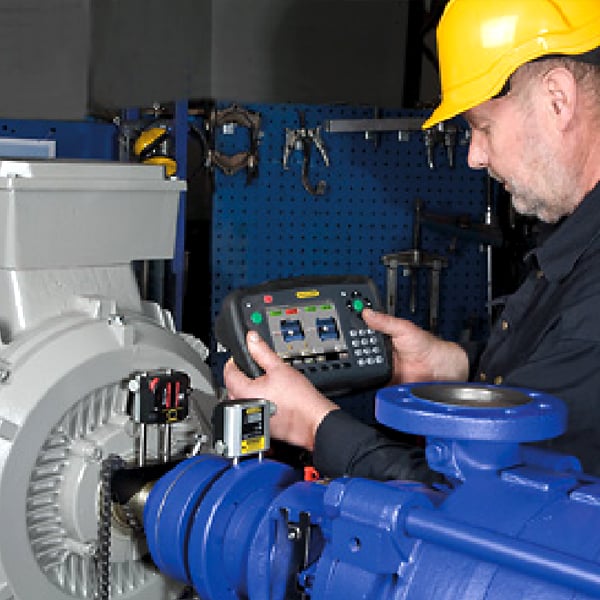Effective Equipment Inspection & Maintenance

How frustrating is it when a piece of equipment fails at a critical time?
Annoying delays, unforeseen costs, production losses, wasted manpower, unhappy customers and reputational damage are just some of the unwanted by-products of unexpected equipment failure – but with an appropriate maintenance programme and effective inspection and monitoring protocols, it is possible to reduce the risk of this happening.
Which maintenance strategy is best?
Even the most comprehensive inspection and maintenance programmes which are undertaken regularly won’t guarantee that downtime or unexpected equipment failure will be avoided, but it’s all about risk management.
A reactive maintenance strategy is a ‘run-to-failure’ model involving maintenance or repair done to a piece of equipment after a failure event. It is inherently more expensive and is more likely to fail. High repair bills, flow-on costs associated with downtime and lost production, higher inventories, interruption to customer orders, quality problems and costly re-runs plus the increased safety and environmental risks will add up quickly and could ultimately affect the financial viability of the organisation.
A preventative (sometimes called preventive) maintenance strategy is a time-based approach where maintenance is regularly performed on equipment to reduce the likelihood of failure and avoid the consequences of unexpected breakdowns and costly disruptions. Where equipment is seen to have a ‘wear-out’ date, preventative maintenance seeks to postpone this through consistent inspection and maintenance.
Predictive maintenance
This is seen as the gold-standard strategy and although is not necessarily the most appropriate for every repair or maintenance need, it is often an aspirational goal for many organisations as it promises substantial cost savings. Predictive maintenance involves the use of data and equipment to predict when and where failures could occur, maximizing equipment and component efficiency and minimizing unnecessary downtime.
It involves the implementation of processes and techniques specially designed to help determine the condition of in-service equipment to predict when maintenance should be performed, and, unlike other strategies which involve routine or time-based maintenance, tasks are performed only when warranted.
Generally, organisations will operate a combination of maintenance strategies which not only monitor the actual condition of their equipment but which also investigate any deterioration in performance or output so that corrective action can be taken timeously.
Deciding on the best technical equipment strategy
If an organisation adopts a dynamic maintenance strategy, the choice of technical equipment will play a key role.
This obviously requires a level of expertise in setting up and running the technologies or devices, and in understanding and interpreting the results to ensure that the right action is taken. Questions to ask include whether the organisation has the appropriate technical expertise? Is the inspection equipment appropriate to the task? Is it well-maintained, calibrated according to specifications and available for immediate deployment? What are the usage levels of the organisation’s inspection or non-destructive testing equipment?
Renting versus buying specialist technical equipment
Poor maintenance strategies can substantially reduce a plant’s productive capacity and choices of technical equipment play a key role in the success, or otherwise, of any maintenance strategy.
Having the appropriate equipment at the right time, in the right place and doing the right job is imperative – and renting may just be the answer.
If an organisation owns test and inspection equipment but usage rates are low, it makes more sense for them to rent instruments only as and when needed.
Apart from a much-reduced capital cost, renting offers numerous other benefits over equipment ownership – particularly where sophisticated and advanced instruments are involved. Instead of having to make do with the capabilities of the in-house equipment, renting enables organisations to access the latest, most advanced technologies with full technical support, advice and guidance from trained experts.
Rental instruments, calibrated and tested to be job-ready are delivered on time to the exact location they are required and costs are only incurred for the duration of the rental period. Moreover, if you choose to rent from an experienced technical equipment supplier like Nexxis, they will have a deep understanding of your business and your needs and can make recommendations as to the most appropriate and cost-effective instrument strategy that will meet your maintenance, operational and financial requirements. Take a look at our range of flexible contracts and payment solutions here.
